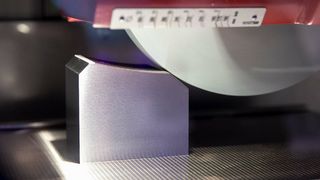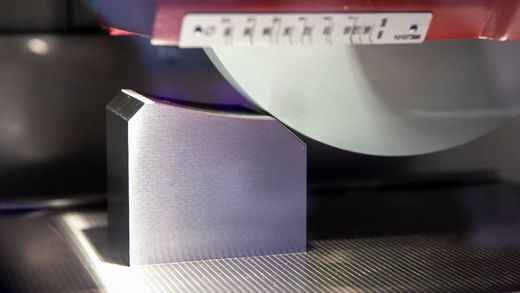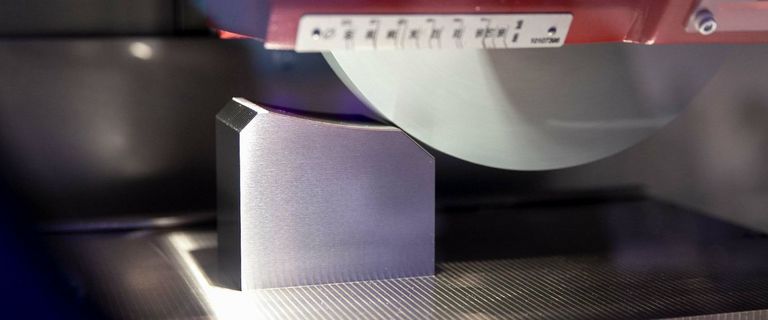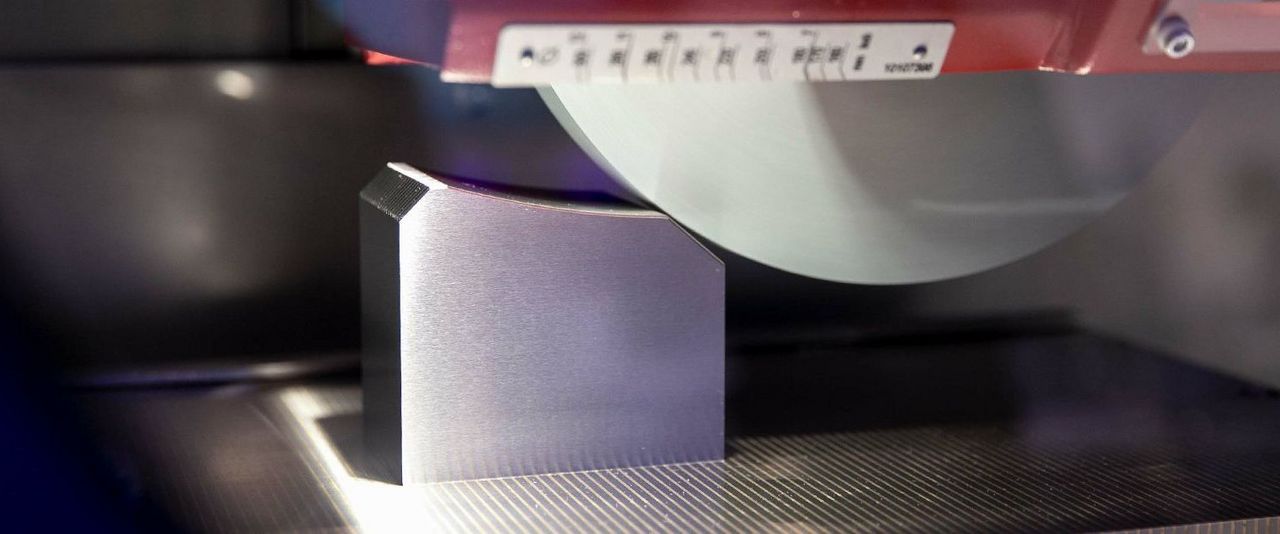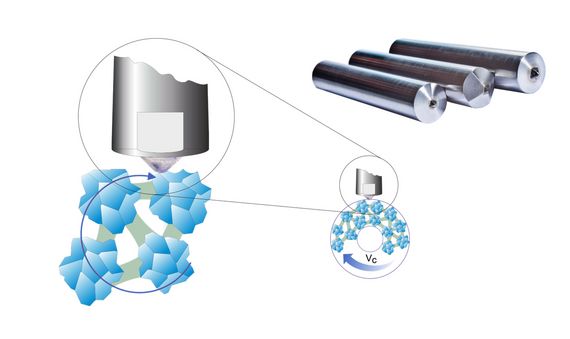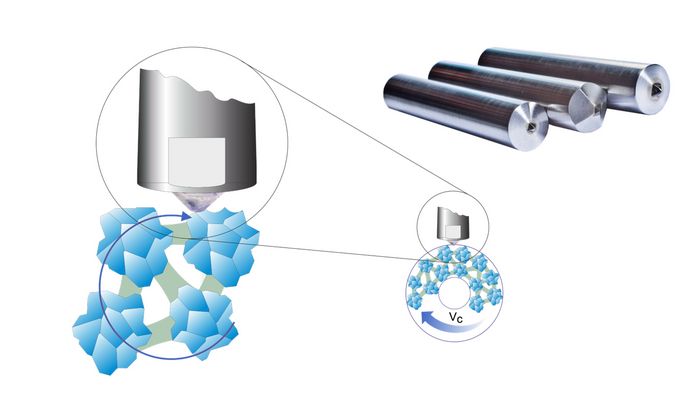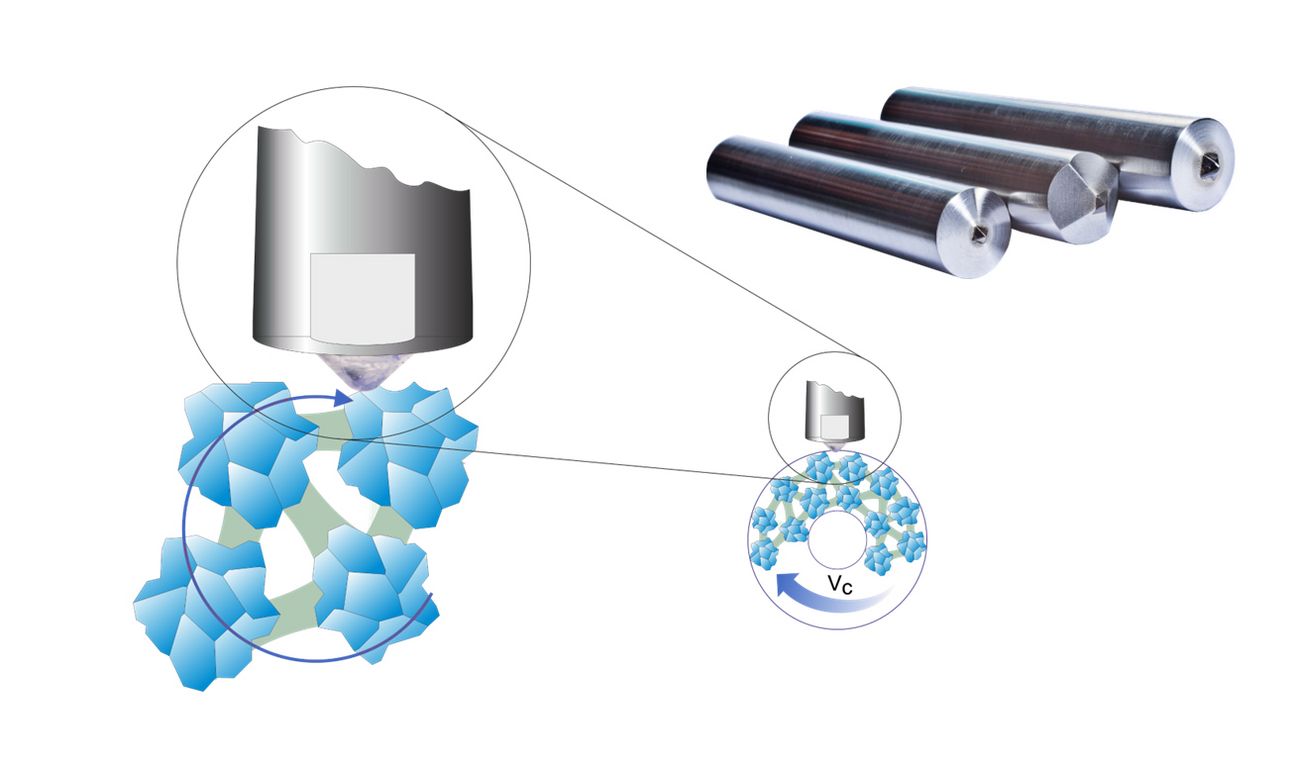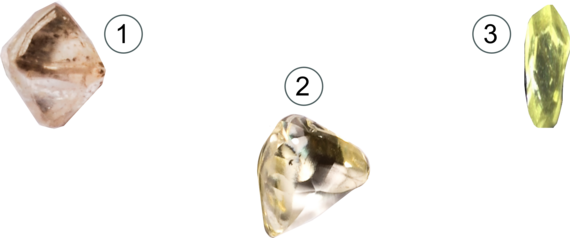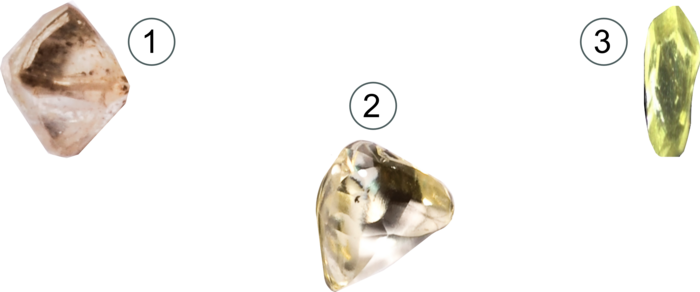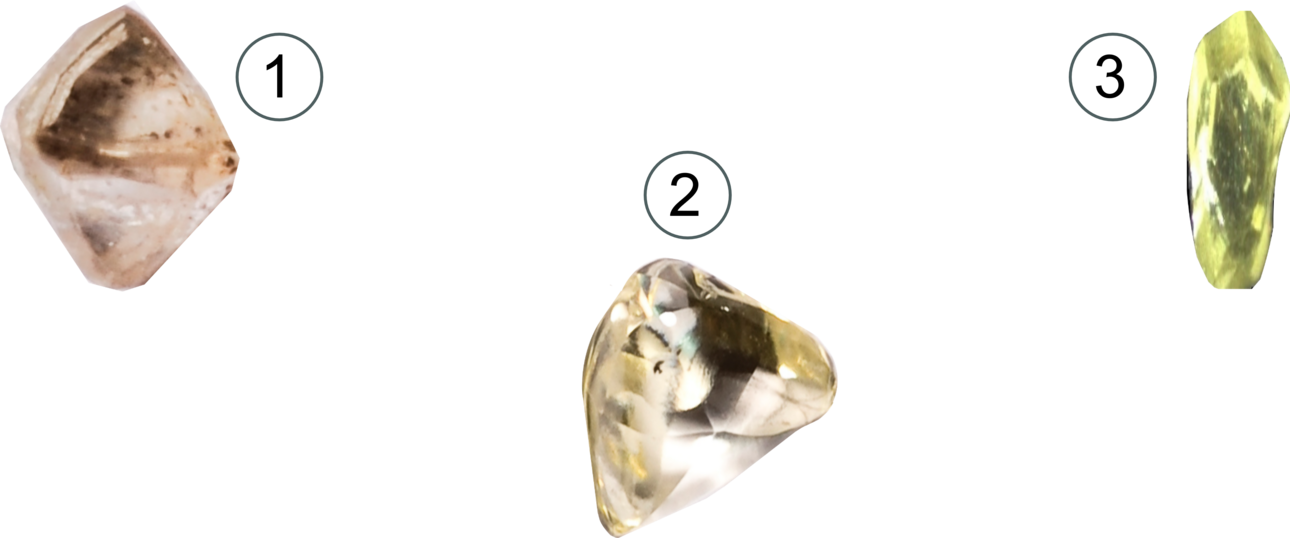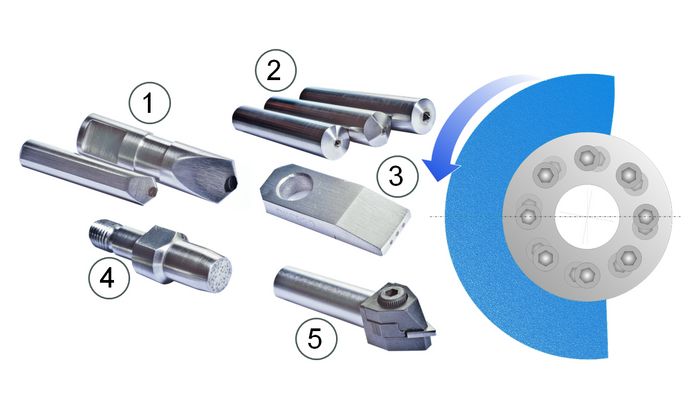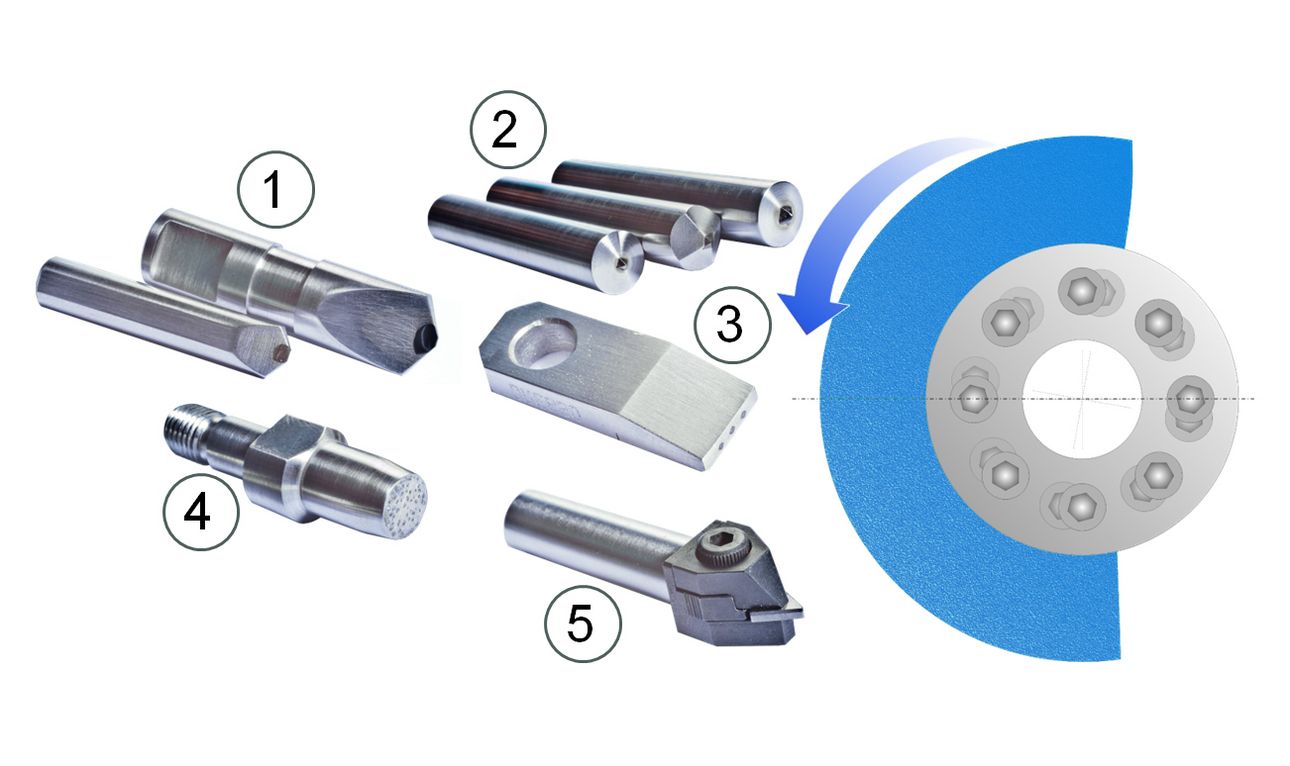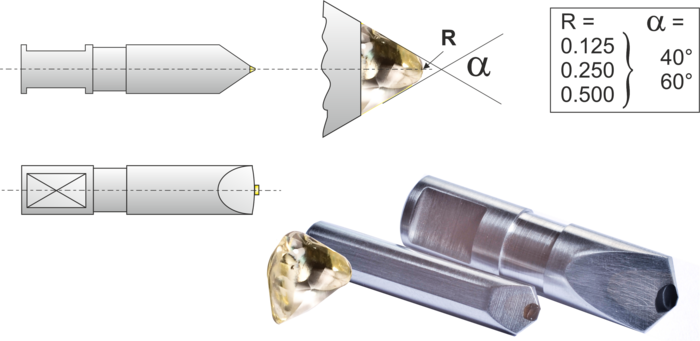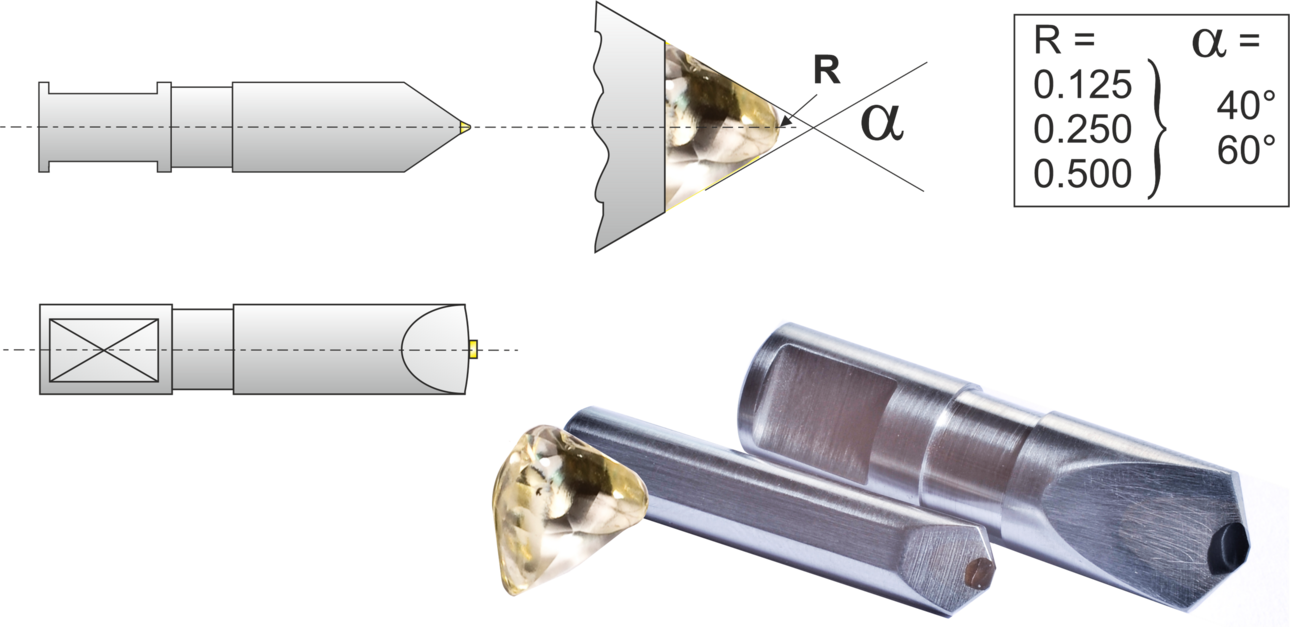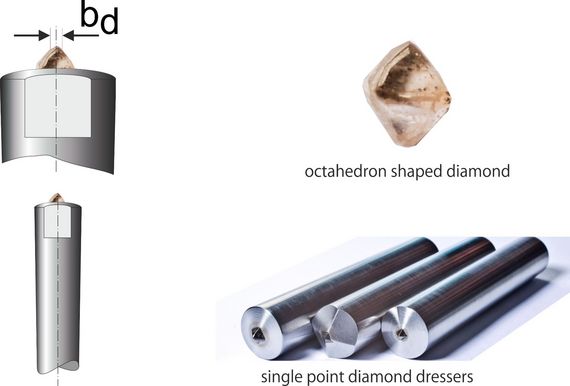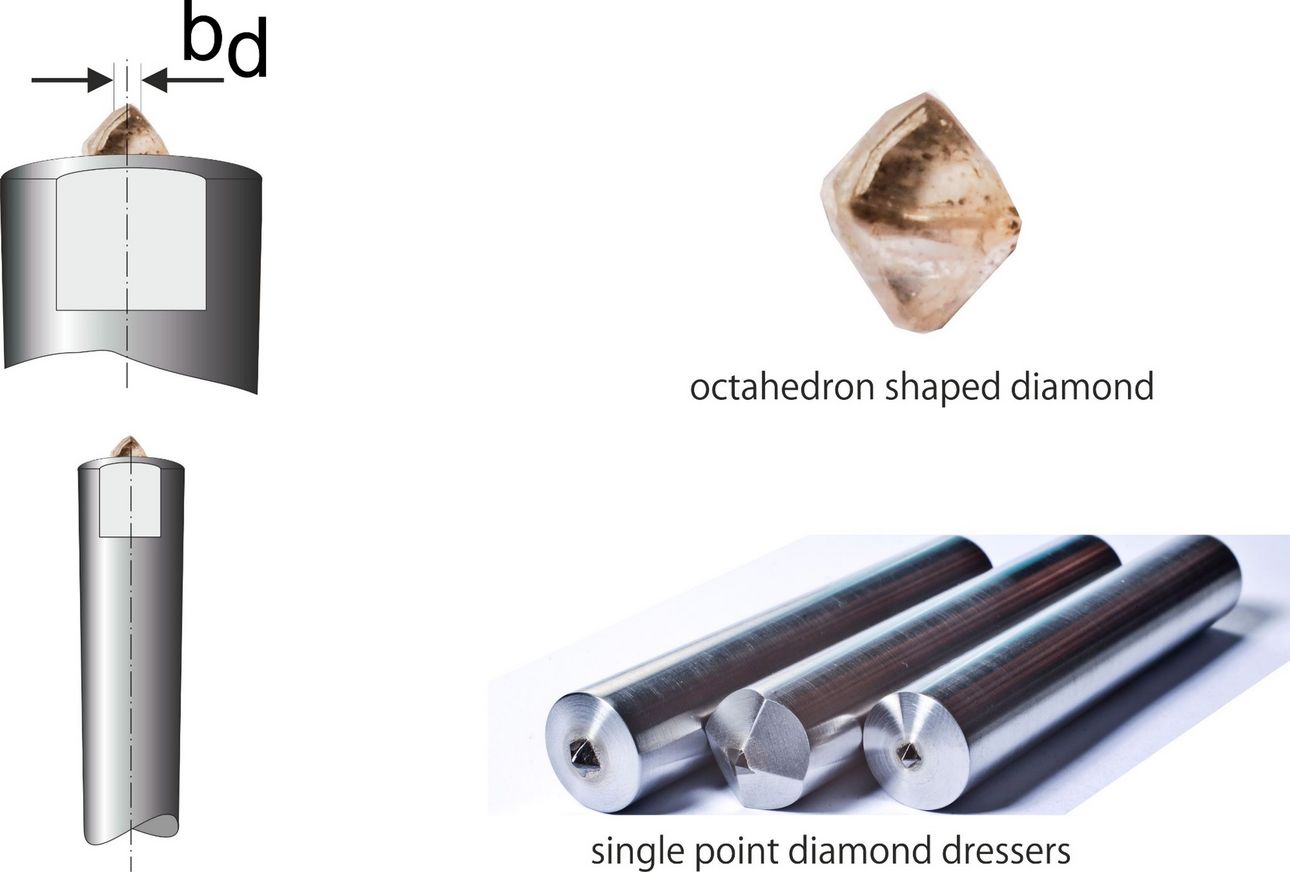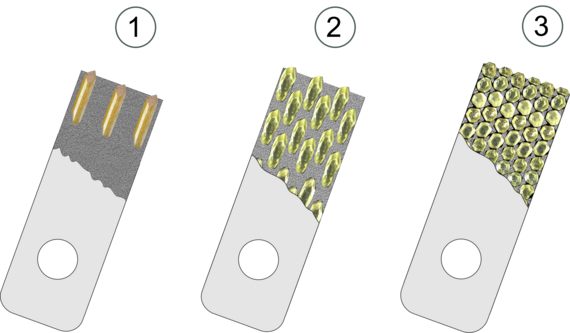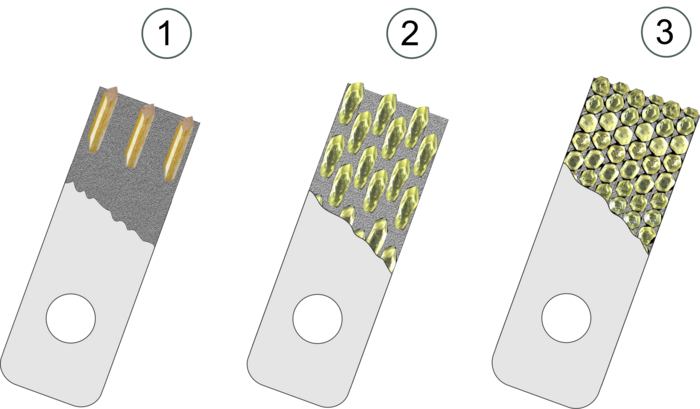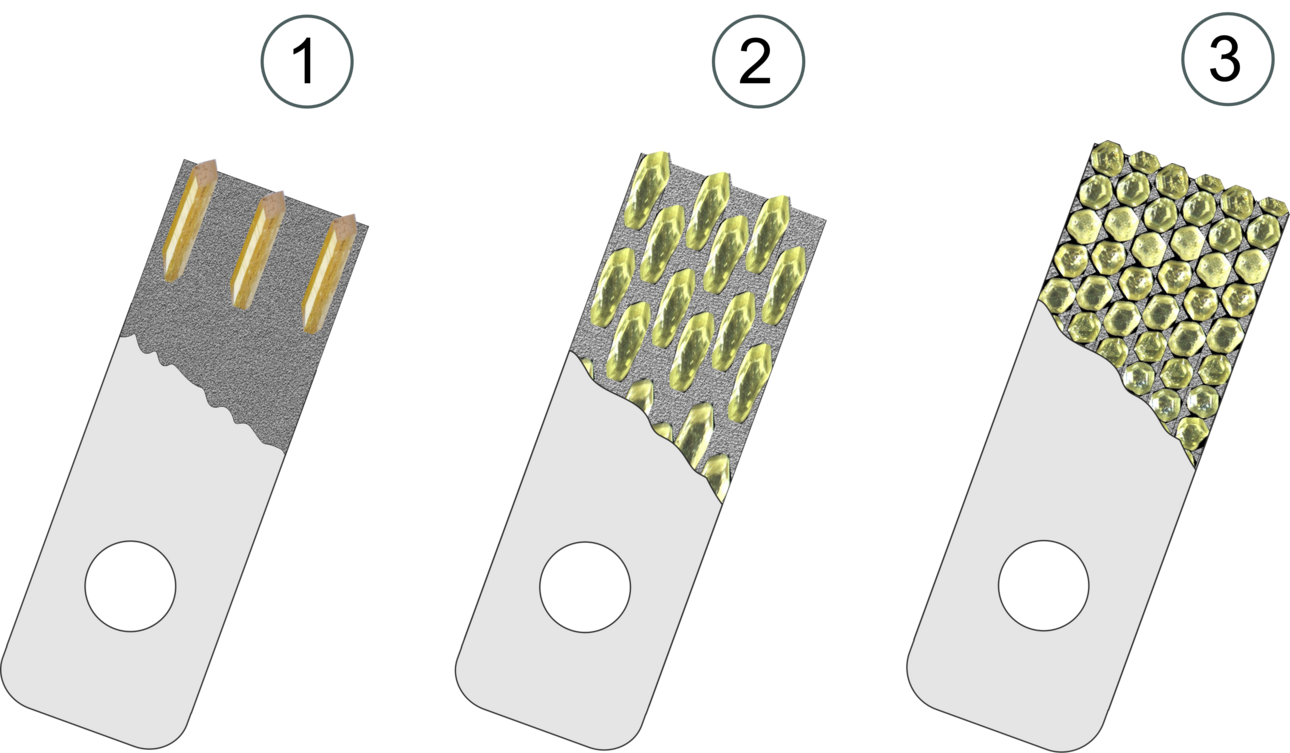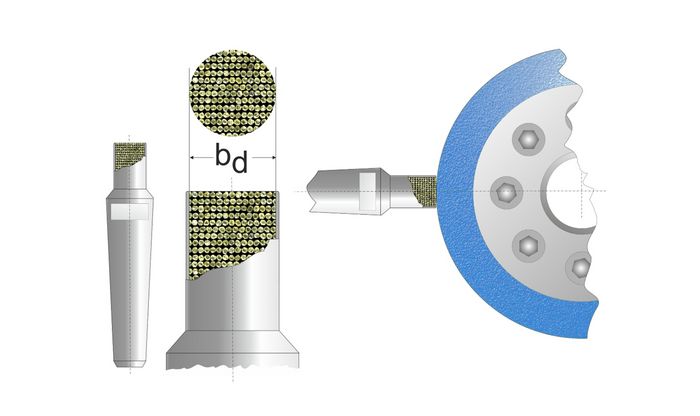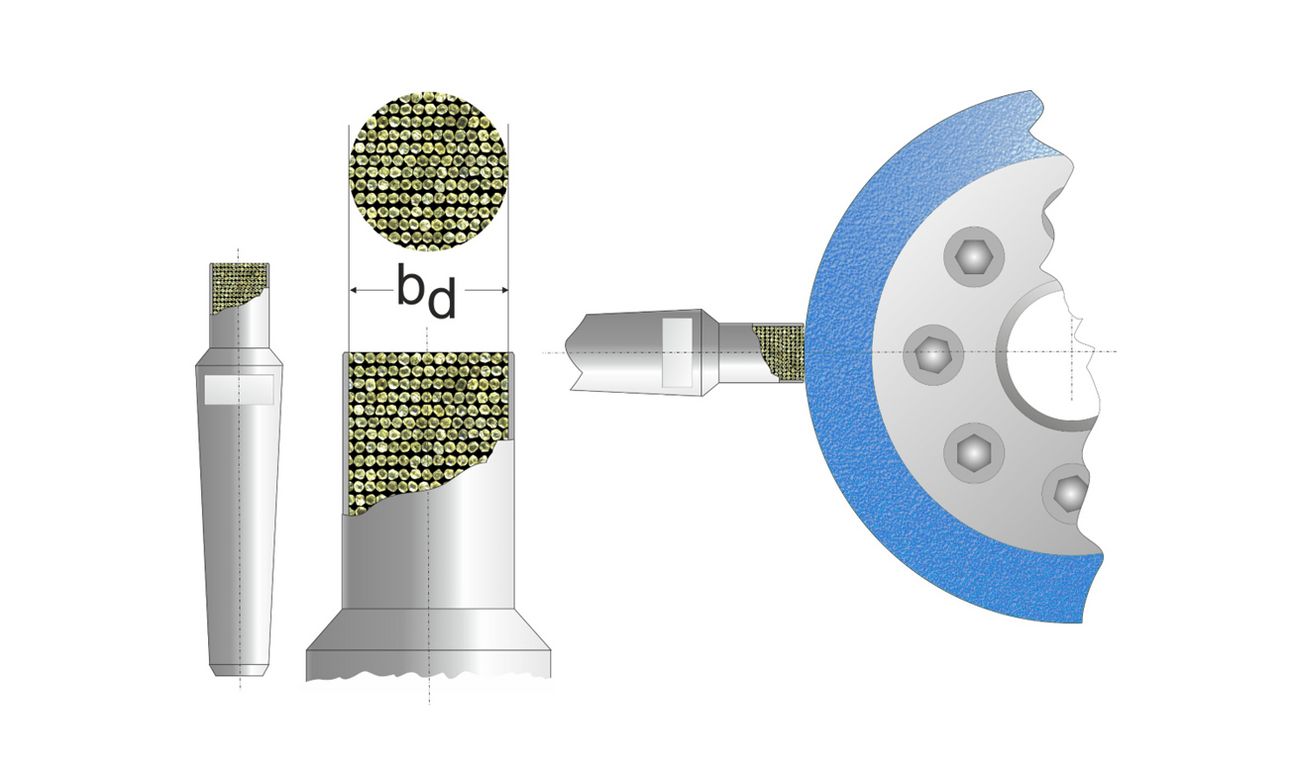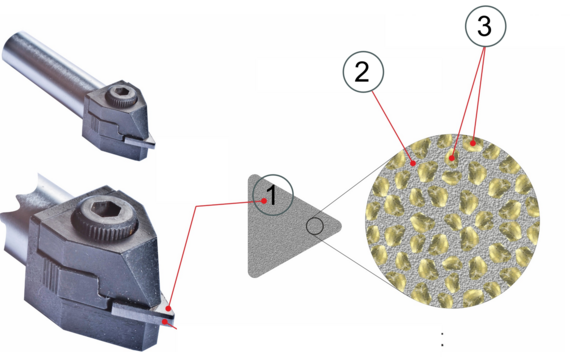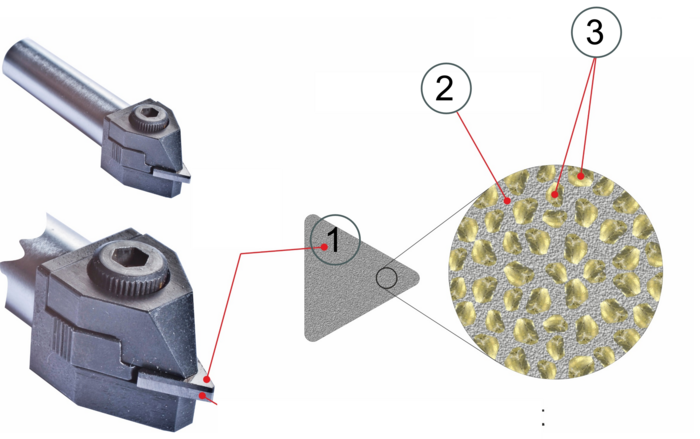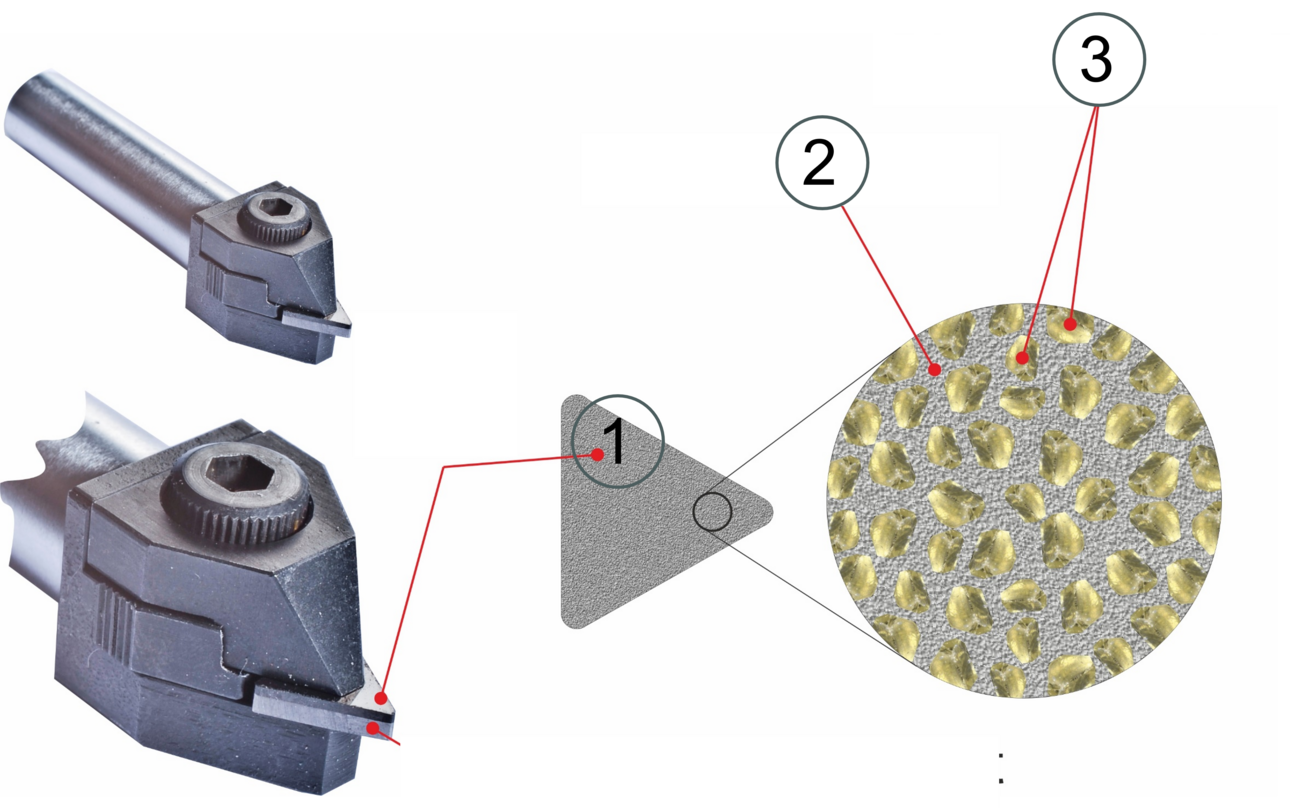Stationary dressing tools, Part 1: Types and areas of application
This blog is published in two parts. In the first part, you learn about the importance of dressing, the most commonly used stationary diamond dressing tools in practice, and the grinding applications they are primarily used for.
The second part covers these tools' key dressing parameters and operating conditions to achieve the best grinding results.
Importance of dressing
The correct choice and use of diamond dressing tools are crucial for the quality and efficiency of the grinding process. Only optimally matched tools guarantee:
- Utilization of the potential of the grinding tool and machine tool
- Adaptation to changing grinding conditions
- Automation of the dressing process
- Maintaining tight tolerances and process capability
- Reduction in overall process costs
The dressing process plays a crucial role in improving the quality and efficiency of the grinding process:
- Geometric shaping of the grinding wheel: Dressing and profiling give the grinding wheel its correct shape.
- Influence on surface roughness (Rts): A coarsely dressed wheel cuts more aggressively but does not produce surfaces as high quality as a finely dressed wheel. Surface roughness can be specifically adjusted by selecting appropriate dressing parameters.
The grinding process becomes controllable when the tool, grinding wheel, and working parameters are optimally matched. The topography on the grinding wheel created by dressing determines the grinding process's performance, quality, and efficiency.
Basic knowledge of diamonds
Properties
- Hardness: Hardest known material (Knoop hardness of natural diamond: 6,500 - 8,500 kg/mm²)
- Thermal conductivity: Highest conductivity of all known materials at room temperature
- Coefficient of friction: Extremely low
- Electrical conductivity: Excellent insulator
- Chemical resistance: Chemically inert to acids and bases (except at temperatures above 800 °C)
- Specific weight: 3.51 g/cm³
- Atomic weight: 12.01
Crystal forms
Natural diamonds occur in various crystal forms. The following shapes are particularly important for dressing tools:
- Octahedron
- Maccles
- Needles
Natural and synthetic dressing diamonds
A distinction is made between natural and synthetic diamonds. Until now, high-quality natural diamonds have been the preferred choice for dressing. However, since natural diamonds are increasingly used in jewelry production, they have become very expensive for industrial dressing applications.
For this reason, synthetic diamonds — such as PCD, CVD, and MCD — have gained popularity. In particular, CVD diamond dressers play a crucial role due to their cost-effectiveness and excellent dressing performance.
Types of stationary diamond dressers
This blog describes the properties and use of the following stationary dressing tools:
- Profile diamond dressers
- Single-point diamond dressers
- Blades dressers
- Multi-point dressers (impregnated dressers)
- PCD dressing inserts
Profile diamond dressers
Profile diamond dressers are used to create precise profiles in grinding wheels for cylindrical and surface grinding, which is only possible to a limited extent with standard single-point diamonds and blade dressers. Maccles diamonds, which feature naturally occurring radii, are preferably used for profile diamond dressers. The naturally occurring radius is precisely lapped to different dimensions (e.g., 0.125 / 0.200 / 0.500 mm). This ensures that no shape distortion occurs during CNC dressing. When dressing ceramic (Cubitron and SG) and silicon grinding wheels, it is recommended not to use these high-quality tools for pre-profiling, as the precisely lapped radius could be damaged.
Single-point diamond dressing tools with natural diamonds
Single-point diamond dressers use octahedron-shaped diamonds. The diamond can be repositioned to expose a new point if a point is worn. Single-point diamond dressers are a cost-effective solution used universally for internal and external cylindrical and surface grinding. They deliver sharp and free-cutting grinding wheels and highly controllable surface finish results.
Blade dressers
Blade dressers are the most widely used stationary dressing tools today. A distinction is made between
- MCD (monocrystalline diamonds) or CVD (chemical vapor deposition) dressing blades
- Needle blade dressers
- Standard blade dressers
With blade dressers, the effective width bd remains constant over their entire service life. This ensures a constant grinding wheel topography at constant dressing parameters. Blade dressers have a constant effective width bd compared to single-point diamond dressers, delivering more constant dressing values. Experts consider blade dressers, especially those with CVD inserts, to be the best solution for stationary dressers in external cylindrical grinding. CVD blade dressers with a single rod are ideal for dressing internal cylindrical grinding wheels.
- Standard blade dressers are cost-effective variants for a wide range of applications.
- Needle blade dressers are more expensive but have the highest consistency of effective width and wear behavior throughout the entire service life.
- CVD blade dressers have the most constant effective width, produce sharp and free-cutting grinding wheels, and are economical.
Multi-point dressers (impregnated dressers)
Multi-point – or impregnated – dressers are often used as a cost-effective alternative to single-point diamonds for very wide grinding wheels for external cylindrical grinding, especially for surface grinding. They offer the longest service life of all stationary dressers. They have a large effective width bd and are therefore wear-resistant but tend to produce less aggressive grinding wheels than single-point diamonds. However, this property can also produce high-quality and extremely fine surface roughness. Due to their high wear resistance, multi-point dressers are also well suited for dressing ceramic (Cubitron and SG) and silicon carbide (SiC) grinding wheels. A common mistake made by users of multi-point dressers is that the dressing feedrate vd is chosen too low. You can read how to calculate this correctly in part 2 of this blog.
PCD dressing inserts
PCD (polycrystalline diamond) dressing tools work similarly to single-point diamonds and are usually designed as triangular inserts. PCD consists of sintered diamond powder, with a metallic bonding layer (usually cobalt/tungsten) providing stability. PCD is somewhat softer than natural diamond but is isotropic and, therefore, very wear-resistant.
- Knoop hardness: approx. 5,500 kg/mm² (natural diamond 6,500-8,500 kg/mm²)
- Specific weight: 3.9-4.4 g/cm³
- Manufacturing process: Diamond particles pressed at ~3,600 °C and 1,700,000 N/cm²; sintering process at 1,500 °C and 600,000 N/cm²
PCD inserts are sintered onto a carbide substrate and feature defined corner radii (e.g., 0.25 mm, 0.50 mm). Due to excessive wear, PCD inserts are unsuitable for dressing silicon carbide wheels (SiC). Care should also be taken with ceramic (Cubitron and SG) grinding wheels, and worn PCD inserts should be used for pre-profiling.
Get in touch with us!
In the second part of this Motion Blog you can read which parameters play a role in the dressing process and how they should be optimally adjusted to achieve the best result.
If you have any further questions about standing dressing tools, please do not hesitate to contact us.




